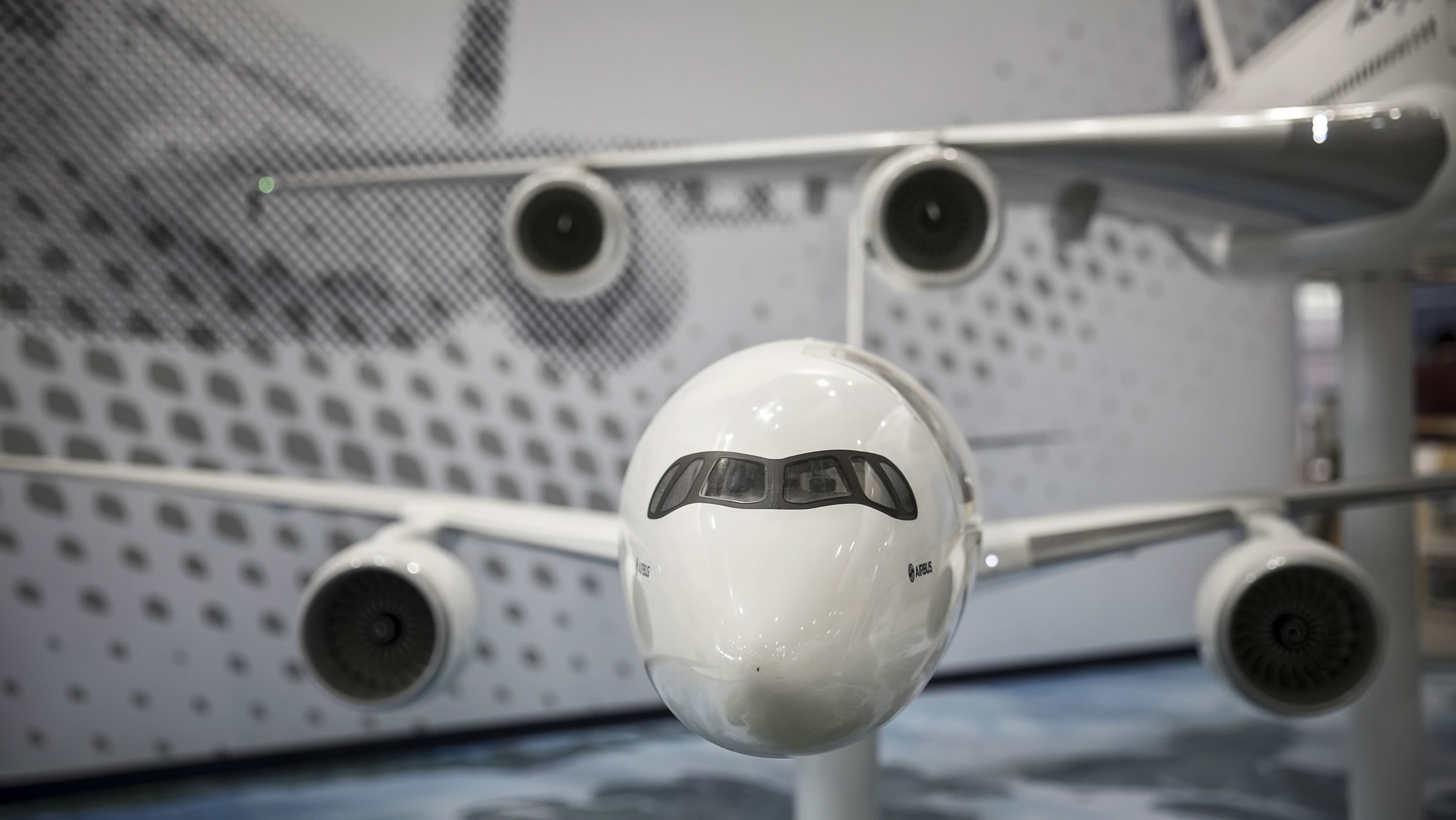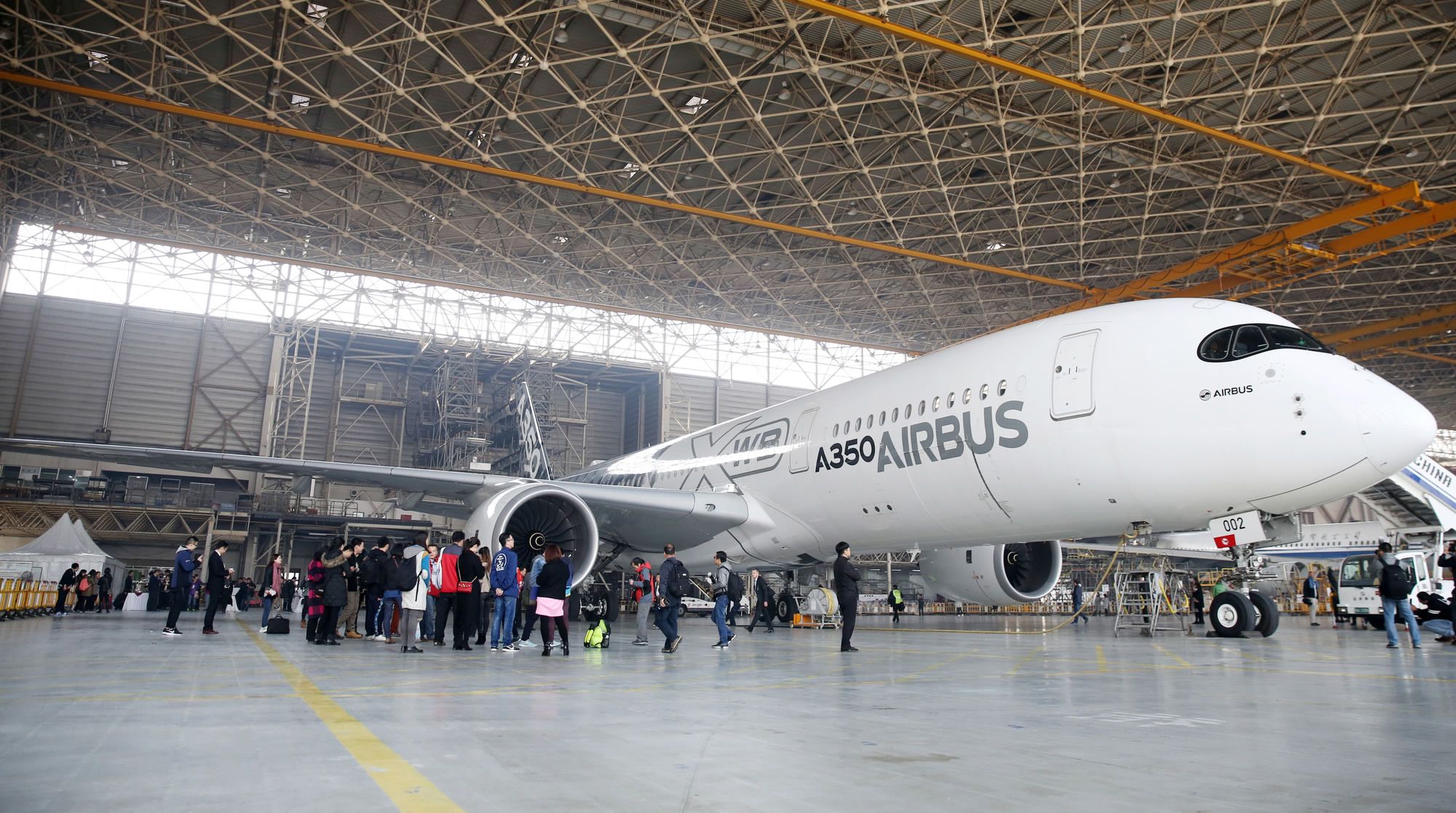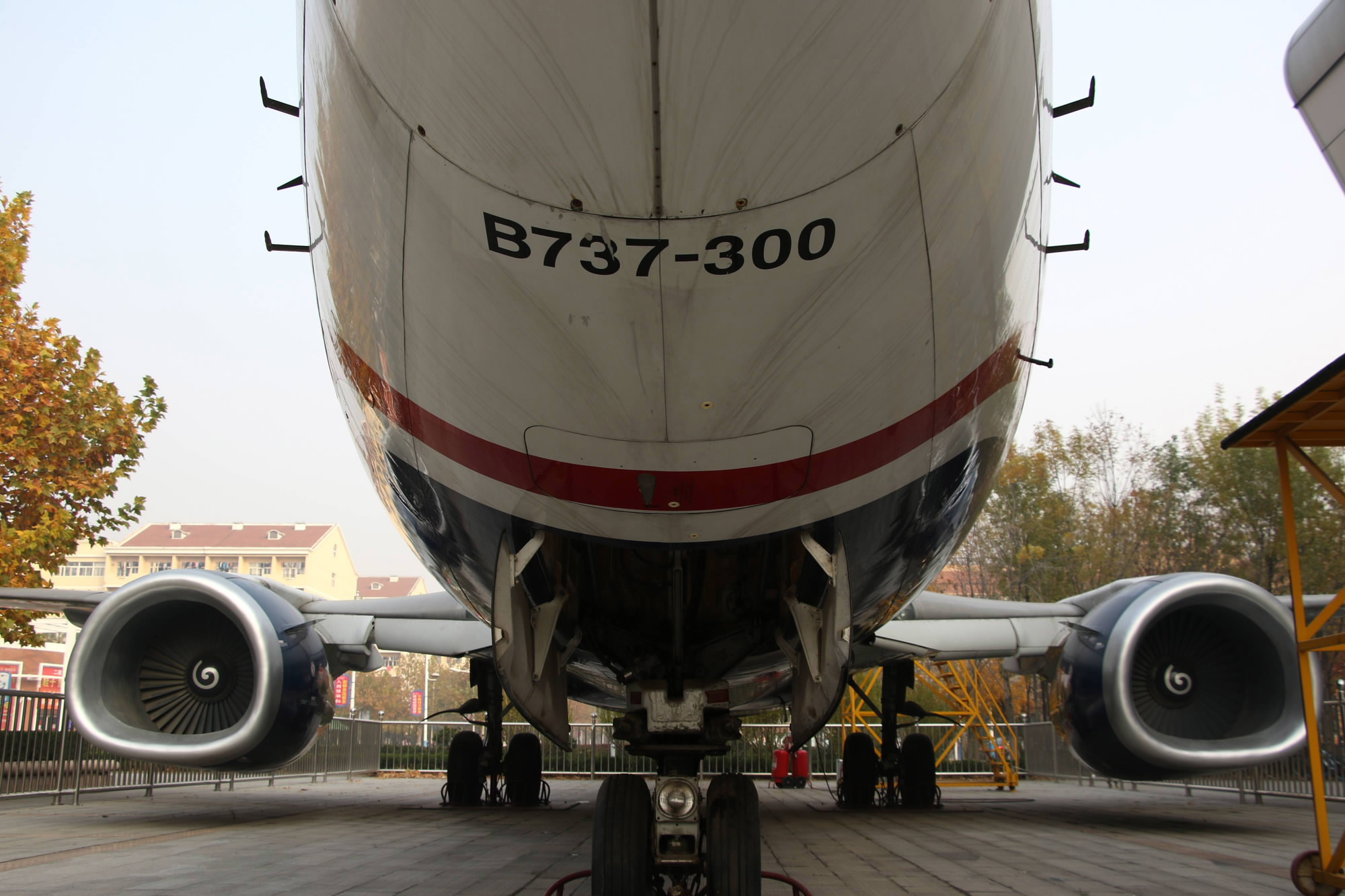
Business
18:38, 14-Jan-2017
Boeing, Airbus head-to-head in China, but speed bumps ahead
Updated
10:34, 28-Jun-2018

The race between aircraft manufacturers looking to expand in China was tight in 2016 with Airbus deliveries closely tailing Boeing’s. The two arch nemeses are enjoying tailwinds, benefiting from Chinese airlines’ plans to expand their fleet sizes as they fly to more worldwide destinations.
European plane maker Airbus delivered 153 aircraft to Chinese operators, marking the seventh consecutive year its delivery volume to the Asian giant crossed the 100 mark.
China accounted for 22 percent of Airbus’s total commercial aircraft deliveries, which hit a record-high of 688 deliveries worldwide.
Meanwhile, Boeing delivered 748 aircraft to countries across the globe in the same year, of which 164 went to China.

An Airbus 350-900 test aircraft makes its debut at Beijing Capital International Airport on November 3, 2016. /CFP Photo
An Airbus 350-900 test aircraft makes its debut at Beijing Capital International Airport on November 3, 2016. /CFP Photo
At roughly 22 percent of the American aircraft builder’s sales, China is Boeing’s largest customer.
China is the world's second largest aviation market in terms of market size, but the country is revving its engine to take its civil airline sector to whole new heights as its carriers add more routes to their maps at home and abroad and acquire new models for a better in-flight experience catering for wanderlust-stricken travelers with deep pockets and an appetite for overseas escapades.
Spreading wings to more destinations Chinese airlines have embarked on a frenzied long-haul growth in recent years.
Since 2006, Chinese carriers have opened 75 long-haul routes, according to the Sydney-based CAPA Center for Aviation. A total 51 of these have been launched just since 2014.
The country’s three biggest airlines have also been fiercely competing for expansion, with aggressive proliferation plans laid out for 2017.
China Southern Airlines seems to be taking on Air China on its own turf in the capital, with plans to enhance its presence in the Beijing hub this year. The Guangzhou-based company intends to also introduce over 200 aircraft at Beijing’s new international airport.

An employee works in front of China Eastern Airlines Corp. signage on display at the China International Aviation & Aerospace Exhibition in Zhuhai, south China’s Guangdong Province, on October 31, 2016. /CFP Photo
An employee works in front of China Eastern Airlines Corp. signage on display at the China International Aviation & Aerospace Exhibition in Zhuhai, south China’s Guangdong Province, on October 31, 2016. /CFP Photo
Meanwhile, China Eastern Airline’s transport capacities to North America, Europe and Australia were upped in 2016 by 62.3 percent, 25.5 percent, and 39.5 percent respectively on an annual basis. The airline, which operates from Shanghai, managed the leap thanks to its expanding fleet, which will be further developed in the coming years after the company signed deals with Airbus and Boeing last April for at least 35 wide-body airliners for the international market.
As Chinese airlines open continental routes, their need for jet airliners to accommodate to their growing reach increases, presenting opportunities for both airplane makers and boosting their businesses at a time global demand stalls.
China’s 13th five-year plan (2016-2020) is also fueling the robust buildout of the country’s aviation market, through a set of targets touching upon infrastructure, air route networks and hubs competitiveness.
By 2020, China will have over 260 airports serving 91 percent of the population, and an elaborate network of medium- and long-haul routes reaching countries along the Belt and Road initiative.
Despite Airbus airplanes making up more than half of the total civil aircraft with more than 100 seats on the Chinese mainland, Boeing is China's leading provider of commercial airplanes.
China is set to become Boeing’s first trillion-dollar aviation market, according to the American airplane maker’s annual China Current Market Outlook (CMO), released last September. The company projects demand for over 6,800 new jets in the country over the next 20 years, totaling 1.025 trillion US dollars.

A retired Boeing 737-300 aircraft parked outside a teaching building at a college in east China’s Shandong Province on November 12, 2016. /CFP Photo
A retired Boeing 737-300 aircraft parked outside a teaching building at a college in east China’s Shandong Province on November 12, 2016. /CFP Photo
Boeing in jeopardy?
However, the company’s positive outlook for the Chinese market has been dampened by concerns over a disruption in Beijing-Boeing relations brought about by a possible trade war initiated by the Donald Trump administration.
Uncertainties about American business interests’ futures in the Asian powerhouse were brought to the fore after Trump pledged, on the campaign trail, to slap a 45-percent tariff on imports from China.
While Beijing remained silent and refrained from officially commenting on the real-estate mogul’s statements, Chinese media were swift to lash out, warning of the consequences for US businesses in the world’s second largest economy if Trump decides to live up to his campaign promises.
“If Trump wrecks Sino-US trade, a number of US industries will be impaired,” an opinion piece published by the Global Times in November read.
“A batch of Boeing orders will be replaced by Airbus. US auto and iPhone sales in China will suffer a setback, and US soybean and maize imports will be halted”.

SITEMAP
Copyright © 2018 CGTN. Beijing ICP prepared NO.16065310-3
Copyright © 2018 CGTN. Beijing ICP prepared NO.16065310-3